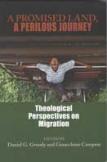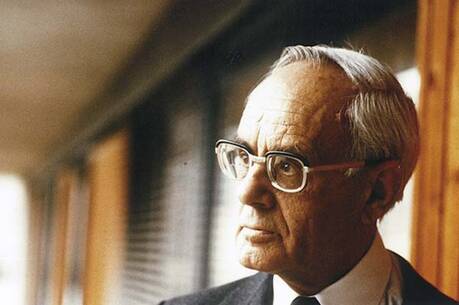Welcome the Stranger
Missing from most of the national immigration debate has been the humanitarian aspects of the migration phenomenon. One can hardly find—on talk radio, in the mass media or in scholarly journals—a serious discussion of the human dignity and rights of the migrants who cross international borders to find work or join family.
A Promised Land, A Perilous Journey, a compilation of essays taking a theological and rights-based approach to the issue of migration, provides a needed framework to begin that discussion. Comprised of pieces from a wide range of scholars, advocates and service providers, it engages the contemporary immigration debate from a faith-based, Catholic perspective. The issue of migration has been with us for centuries, and one truth maintains: Migrants are human beings and are imbued with God-given rights that must be honored.
In his foreword to the book, Cardinal Oscar Rodríguez of Honduras captures this theme: “We are called to see in our migrant brothers and sisters a common humanity and work together for a common solidarity, that is, a community of love and fellowship reflective of the reign of God.”
Several noted scholars build on this theme in the first part of this four-part compendium, uncovering the theological roots of migration. Jacqueline Hagan of the University of North Carolina opens with a vivid and personal account of the faith of migrants and how religious symbols and rituals are central to their journeys. Peter Phan of Georgetown University looks at the history of the early Christians as migrants and strangers in new lands. Jesus himself was a migrant, an itinerant preacher “having no place to lay his head,” (Lk 9:58) and, profoundly, as both divine and human, part of two worlds. Like Christ, the first Christians became migrants to spread the Gospel. Gustavo Gutiérrez, O.P., of Notre Dame, noted scholar of liberation theology, concludes this section with an analysis of migration as part of the “preferential option for the poor.”
The book’s second part communicates a sense of the mission of the church toward migrants and how it has developed over the centuries, beginning with Christ’s instruction to “welcome the stranger,” for “what you do for the least of my brethren, you do unto me” (cf. Mt 25:35, 40-41). Stephen Bevans of the Catholic Theological Union in Chicago offers a thorough analysis of the Christian obligation in this regard. Giovanni Tassello writes on the Scalabrinian tradition of assisting migrants and provides historical insight into how this mission was developed and continues today. Pat Murphy, the director of Hispanic ministry for the Archdiocese of Kansas City, points out the challenges and opportunities for local dioceses in ministering to a new generation of Hispanics.
Then, in the part entitled “The Politics of Sovereign Rights, Cultural Rights, and Human Rights,” writers confront the dichotomy of natural rights and sovereign rights. Where do the human rights of the migrant and the right of a sovereign nation to control its borders intersect? Does one right trump another? These questions are certainly at the fulcrum of the current debate, as manifested in the political terms “amnesty,” “rule of law” or “border security.” But as the contributors to this section suggest, human rights and sovereignty are not mutually exclusive: both can be achieved and, in some cases, complement each other.
Graziano Battistella of the Scalabrini International Institute in Rome begins the argument by suggesting that a human rights approach to migration creates room for common ground among competing interests. By using human rights as the yardstick for effective policy, economic, social and security interests will be served. “Policies of exclusion,” as he calls them—deportation, detention, worker exploitation—only lead to a failure of all competing interests and exploitation of the human being. This argument comports with the policy positions of the U.S. bishops, who favor legal status as a way to promote human rights for the undocumented and to serve the common good.
Donald Kerwin, executive director of the Catholic Legal Immigration Network, compares a rights-based approach to current U.S. policy and practice. Human rights and national security can go hand in hand, provided the right policies are adopted and implemented. In the case of the United States, post-9/11 security concerns have, in some cases, undermined basic human rights. “National security, at its core, implicates the right to self-preservation,” Kerwin concludes. “The Catholic natural rights tradition, however, cautions against turning security into an ‘idol’ or an absolute good.” In the end, the human dignity and rights of the person should remain a central principle—even in a national security context—and the ultimate measure of just immigration policies.
Concluding this section, Olivia Ruiz Marrujo of the El Colegio de la Frontera Norte in Tijuana, Mexico, draws attention to the sexual violence confronting migrant women, bringing needed attention to an underreported issue—one that makes clear the necessity of a rights-based approach to migration.
The final section of the book returns to the theme of Christ as migrant. Daniel Groody of Notre Dame looks at migration and the Eucharist, the central example of God’s real presence among us. He concludes powerfully: “The liturgy of the Eucharist is a place where we seek to develop a community that transcends all borders, that sees in the eyes of the immigrant stranger a brother, sister, and a real presence of Christ.”
A Promised Land, A Perilous Journey is a useful resource for Catholics (and others) who want to reach beyond the dehumanizing language of the national immigration debate and articulate a vision of the migrant as a human being created in God’s image. It does not pretend to engage the anti-immigrant rhetoric so often heard and seen in the media these days, and it will probably not move those who use or agree with such rhetoric. But that is not its purpose. Its purpose is to educate and inspire those who are called to “welcome the stranger” that theirs is not only a just but also a spiritual mission. It accomplishes that goal very well.
This article also appeared in print, under the headline “Welcome the Stranger,” in the August 4, 2008, issue.








